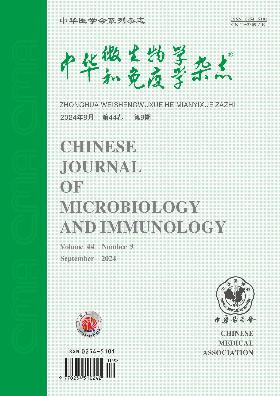Bioinformatics prediction of molecular mechanism and intervention drugs of SARS-related immune injury and their significance for COVID-19 treatment
Q4 Immunology and Microbiology
引用次数: 2
Abstract
Objective To investigate the omics mechanism of SARS-related immune injury and predict targeted therapeutic drugs through clinical bioinformatics analysis of the transcriptome data of SARS virus in order to provide reference for clinical treatment of COVID-19. Methods The transcriptome data of SARA virus were collected from the Gene Expression Oibus (GEO) and used to screen differential genes. Enrichment analysis and protein interaction analysis were performed to investigate the mechanism of immune damage associated with SARS. A platform of epigenetics in precision medicine (EpiMed) was established to predict potential therapeutic drugs. Results The mechanism of SARS-related immune injury was complex, involving affecting the function of immune cells through signaling pathways such as Toll-like receptors, increasing cytokines in plasma through Th17 signaling pathway and inducing autoimmune responses after autoantibodies were generated by molecules such as IL-6, NF-κB, and TNF. Drugs such as Chuanqiong and Etanercept might have therapeutic effects on SARS-related immune damage. Conclusions SARS virus could cause abnormal expression of many immune-related molecules and signaling pathways. Drugs such as Chuanqiong and Etanercept might have therapeutic effects on SARS-related immune damage. This study might provide reference for clinical treatment of COVID-19. Key words: SARS virus; COVID-19; Immune injury; Clinical bioinformatics; Drug predictionsars相关免疫损伤分子机制及干预药物的生物信息学预测及其对COVID-19治疗的意义
目的通过对SARS病毒转录组数据的临床生物信息学分析,探讨SARS相关免疫损伤的组学机制,预测靶向治疗药物,为新冠肺炎的临床治疗提供参考。方法从基因表达数据库(GEO)中收集严重急性呼吸系统综合征病毒的转录组数据,用于筛选差异基因。通过富集分析和蛋白质相互作用分析,探讨SARS免疫损伤的机制。建立了一个精准医学表观遗传学平台(EpiMed)来预测潜在的治疗药物。结果SARS相关免疫损伤机制复杂,包括通过Toll样受体等信号通路影响免疫细胞功能,通过Th17信号通路增加血浆细胞因子,以及IL-6、NF-κB和TNF等分子产生自身抗体后诱导自身免疫反应。川琼和依那西普等药物可能对SARS相关的免疫损伤具有治疗作用。结论SARS病毒可引起多种免疫相关分子和信号通路的异常表达。川琼和依那西普等药物可能对SARS相关的免疫损伤具有治疗作用。本研究可为新冠肺炎的临床治疗提供参考。关键词:SARS病毒;新冠肺炎;免疫损伤;临床生物信息学;药物预测
本文章由计算机程序翻译,如有差异,请以英文原文为准。
求助全文
约1分钟内获得全文
求助全文
来源期刊

中华微生物学和免疫学杂志
Immunology and Microbiology-Virology
CiteScore
0.50
自引率
0.00%
发文量
6906
期刊介绍:
Chinese Journal of Microbiology and Immunology established in 1981. It is one of the series of journal sponsored by Chinese Medical Association. The aim of this journal is to spread and exchange the scientific achievements and practical experience in order to promote the development of medical microbiology and immunology. Its main contents comprise academic thesis, brief reports, reviews, summaries, news of meetings, book reviews and trends of home and abroad in this field. The distinguishing feature of the journal is to give the priority to the reports on the research of basic theory, and take account of the reports on clinical and practical skills.
 求助内容:
求助内容: 应助结果提醒方式:
应助结果提醒方式:


